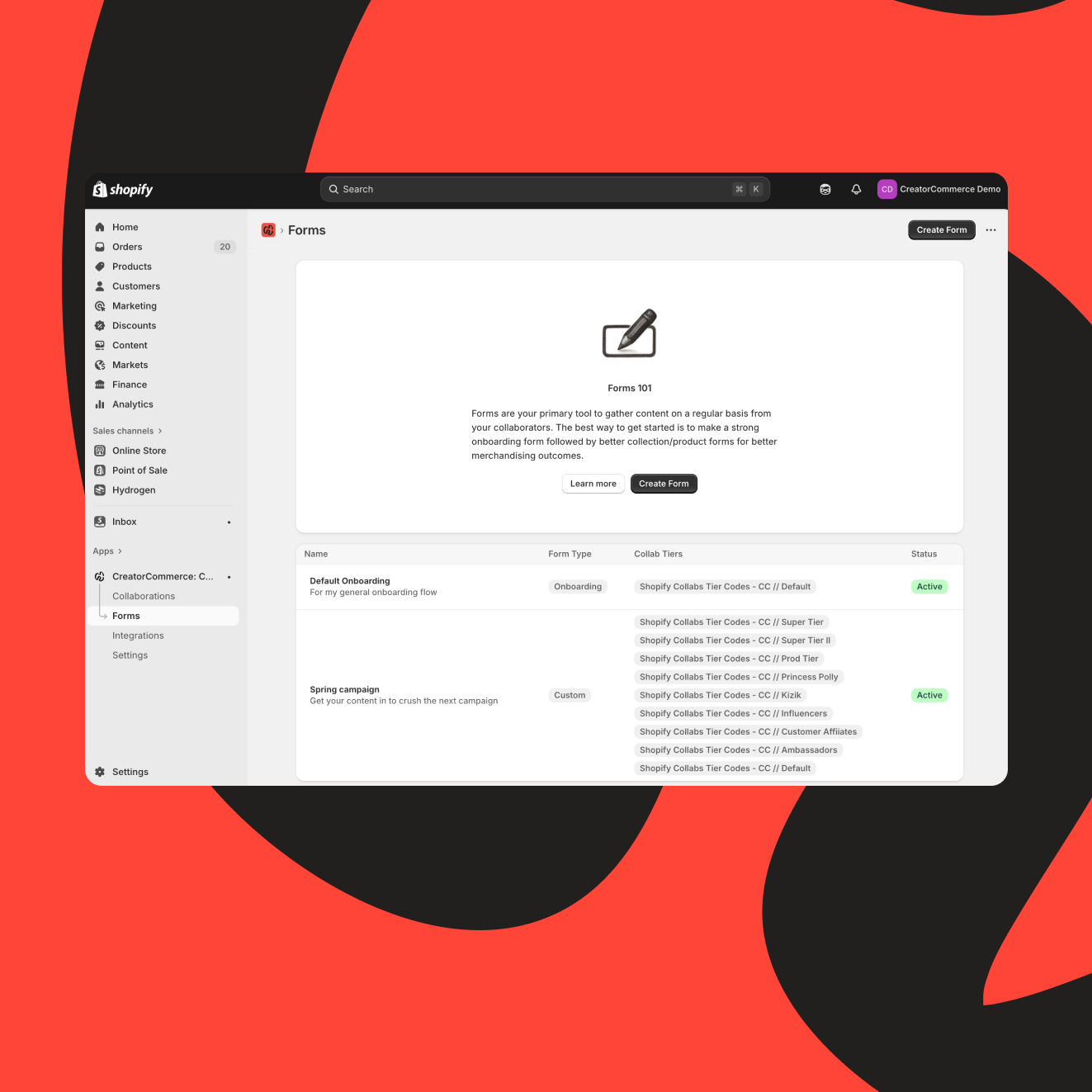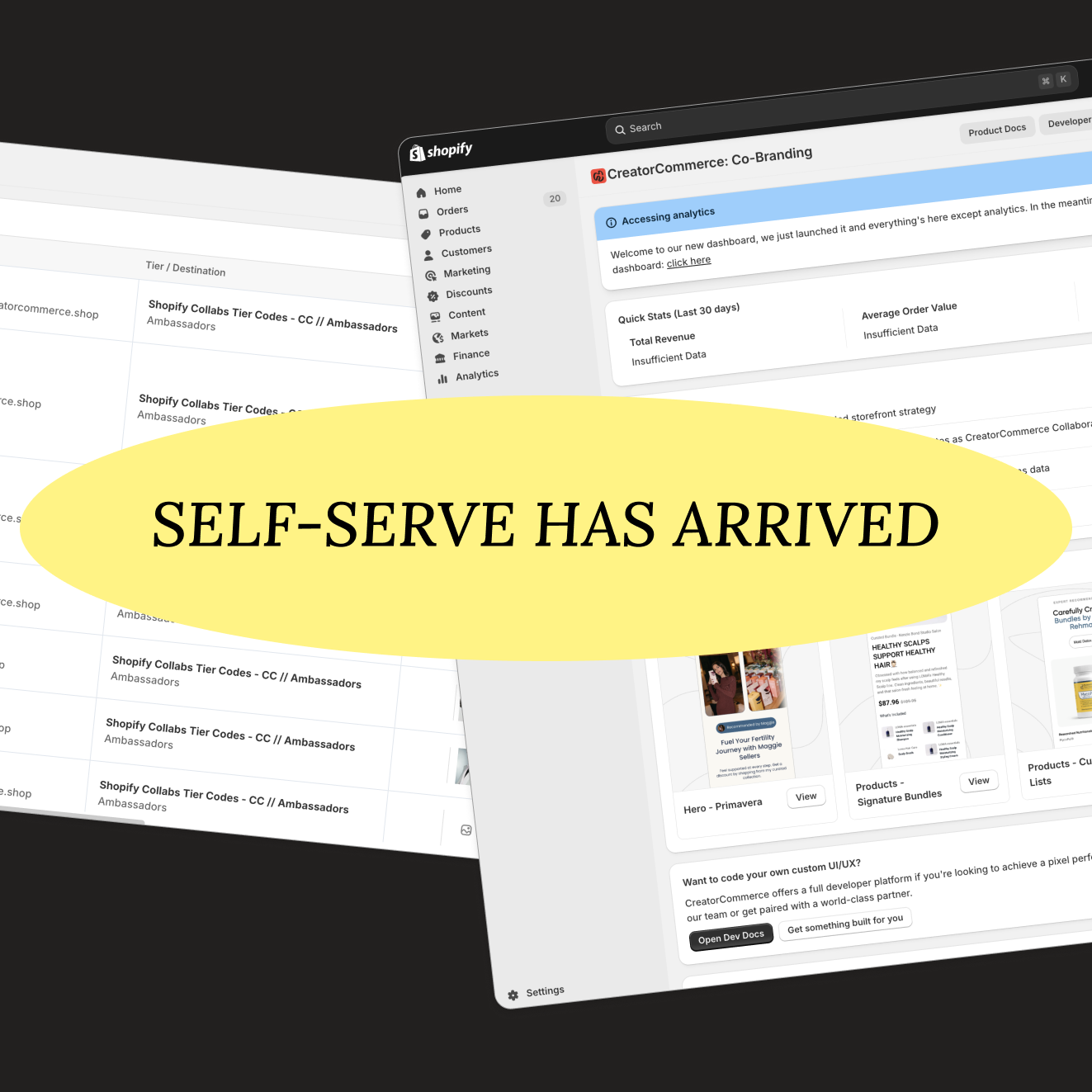Setting the Stage
The creator economy, and race to deepen collaborations with influencers is growing in all directions. Meaning more players, more impressions, and more dollars are entering the arena each day. To give a sense of this growth, consider that the amount of professional content creators has grown by 165m+ creators since 2020 alone (With over 300 million content creators today).
And naturally with the growth of any industry, inevitably comes mass commercialization. Which occurs the moment in which the ‘new shiny thing’ starts to become a legitimate and desirable career path for those participating. With over 25% of Gen Z wanting to become content creators when they grow up, I’d say we are getting there.
DTC eCommerce taught us all a very valuable lesson, that better stories, that speak to a niche audience, ultimately sell more products. However, this was a proof of concept for what’s to come as the creator economy continues to evolve. This content-to-commerce concept is twice as effective when done by the hands of a creator. As humans, it’s a lot easier for us to identify value through people’s names than it is with brand’s names. People themselves are able to express opinions, tell stories, and have relatable experiences that don’t require needing to hire actors/actresses, hire a PR firm, or run ads to convey.
This is great news for creators. A rising or inspiring content creator today is in the golden age of their influence. And while the tools and business environment around them can still be quite antiquated at times, they’re catching up very quickly. All you need today is a compelling angle, a phone, and internet connection – and the rest can be figured out later.
This is also great news for brands. Who have been faced with steep competition, throttled ad costs, and the daunting need to diversify their channels as much as possible. This dichotomy comes at the perfect time for brands and creators to double down on ways in which they can work together.
This is why we believe the future of commerce will be increasingly led by creators, stemming from continued creator audience growth (Growing 25% year over year), followed by brands seeking to thrive in a “grow at all cost” economy. This fundamental shift towards Creator-To-Consumer Sales, will become a mainstream pillar for brands to sell through, and for creators to add to their monetization stack to build a larger business for themselves.
At CreatorCommerce, we are building the tools to push creators & brands towards this moment. With a team with deep experience in eCommerce, and having enabled over $5 billion in GMV with products in the past – we’re focussed on cultivating better activation, conversions, and attribution by enabling creators to sell products for the brands they love, directly from a personalized & co-branded shop of their own.
Brands can instantly elevate their affiliate campaigns and word of mouth marketing programs by enabling their affiliates & influencers to become curators through an integration with their affiliate marketing tool of choice.
An Opportunity to Influence
Think of the last few online purchases you made, how many of them were influenced by someone else?
Commerce is and forever has been a referral-based concept. Very rarely are we directly influenced to buy from the first site of an ad. Advertisements require an average of 7 touch points to create a conversion, and they pale in comparison to a referral from someone you trust.
Referrals these days have taken on an outsized effect in our day-to-day lives. They used to only come from the people we interacted with, but in a digital-first age, they also come from personalities we see online (AKA Content Creators).

Influencers have become a phenomenal chess piece in the battle for attention, yet, most haven’t capitalized on the situation from a financial standpoint. Collaborations are still in their infancy in terms of industry adoption, and influencer promotions grab 4X more attention than standard promotions from brands.
What’s being described here is the same mechanics that have made affiliate marketing a $17 billion dollar business as well.
While on paper it appears to be the best channel for a brand (with perfectly aligned incentives) it somehow has its drawbacks. Particularly in regards to affiliate link conversion rates, session & purchase attribution, and creator motivations.
Lack of Professional Infrastructure and Tooling Holds Us All Back
Creators need better tools to facilitate their end of partnerships, and to better establish themselves as a business and quality channel of their own. Money can motivate someone to take an action, but autonomy, ownership, and performance is what allows someone to give it their all. It’s the difference between working at a company vs receiving equity in it.
The reason Facebook Ads became an advertising force is because it productized the ability to systematically reach users at scale. Creators will become the replacement as soon as the same level of productization occurs around reaching their own audiences at scale. Said differently, the creator economy lacks the infrastructure to reach its peak.
To conduct a campaign today, a creator is given an affiliate link, and is asked to drive sales through it with a corresponding discount code.
The problem with this is that it:
- Feels overly promotional & inauthentic
- It’s inefficient and holds back CVR
- Doesn’t help creator brand development
- Restricts ability to the creator to build audience momentum
- Creates attribution issues
Driving to an external webpage, instead of your own, spells inauthenticity. The FTC still allows you to conduct paid promotions without the use of #ad or #paid if you still clearly explain the underlying business dynamic. So what’s the most authentic way to explain that dynamic? Creators moving forward should do so by showcasing a business of their own, that fans can visit and purchase recommendations from. This still conveys the paid relationship, while wrapping the promotion in the veil of a recommendation and experience instead.
Adding to that, there’s benefits to a co-branded shop redirection beyond just the authenticity boost. It creates a more trusting & efficient environment as well. Consider that consumers engage in paid partnerships because of the creator. They may be drawn to their content, photography or story-telling, but as soon as they click an affiliate link, that context is left behind. By taking a consumer to a creator’s branded shop to conduct a transaction instead, you can keep the consumers immersed in the content & persona that brought them into the funnel, and get them converted more easily by maintaining such trust. Boosting affiliate rates by 3-6x compared to the usual affiliate rate average of 0.5%.
When a creator skips straight to a brand’s website they lose the ability to create a brand of their own. From a brand’s perspective this may seem ideal, but we promise you it’s the opposite. By allowing a creator to build a bigger brand around their recommendations, it gives them more content & freedom to push products more often. Their audience will give them more space to do this as they care more about the future of the creator, and less about the future of a brand. Finally, this gives the creator more motivation to create better content around the recommendation, because a recommendation-based personal brand is to their long-term strategic benefit as well.
When a promotion redirects directly to a brand’s website, this also takes away from a creator’s ability to opt those consumers into a mailing list for future direct promotions. Once again, a brand may consider this not in their best interest, but when you consider reach rates, it most certainly is. The reach rate on Instagram today is roughly 10-25% depending on the size of the creator. When you rely only on their social audience, you are subjected to this reduction in reach. However, when the creator is in a position to own their audience as well through messaging subscription, this only improves top-of-funnel for a brand. By doing so you can get exposure to a creator’s natural reach rate, and access to their subscriber list of top followers.
Finally, let’s talk about tracking. What happens when a user sees a promotion, and goes to the brand directly to make a purchase? This goes untracked if there’s not a discount code used for backup tracking. This extra margin may be ideal to a brand, but it’s almost certainly better to know where it came from so you can double-down on that source. Affiliate links today are too fragile, and can be easily lost of their prior UTMs - and iOS 17’s upcoming changes won’t make that any easier. The forgetfulness of discount codes only adds another possible failure step into the fold. By ushering sales through individual creator stores, you better funnel an audience into a high-converting place that supports future promotions, and lends well to crystal clear tracking.
How CreatorCommerce is Building for the Future of C2C Sales
There are plenty of great tools out there aimed at better connecting brands to creators. However, our perspective is that they simply aren’t going deep enough. At CreatorCommerce, we aim to not only connect creators & brands through robust integrations with affiliate tools, but to also ensure they both obtain the expected outcome they were seeking from the relationship. It’s no secret that affiliate marketing has a rich history of lopsided relationships, and we aim to ensure that both parties receive their fill to stay motivated.
Many tools have taken a stab at this, and they have taken the unified platform or mobile app approach, that puts the interest of the platform in front of the interests of creators and their downstream consumers. While consumers prefer convenience, they also prefer experience – and they want to connect with the creators they follow, not a platform that wraps them. This is exactly why DTC eCommerce apps are often able to get up to 30% of their consumer base to download & shop on their own native apps instead of shopping on Amazon.
We’re building to put creator’s in a position to launch and manage immersive curation experiences that drive immense sales for brands they work with – all stemming from strategic brands that issue affiliates a co-branded shop to use.
Our mission is to empower creators & brands to grow together, so that both can build more sustainable businesses that stand the test of time.
To channel Mr. Beast, we want to reference the important fact that consumers are becoming less tied to platforms, and more tied to creators. The concept of a creator blowing up on different platforms didn’t exist until a couple years ago, and it arrived right on time for the coming of CreatorCommerce: where creator’s can now leverage this cross-platform energy to direct traffic to their own personal store, filled with collaborations that represent them.
So if you’re a brand or a creator looking for this next phase of the industry, reach out to get a demo & access to the CreatorCommerce platform.
We have a ton to share on how we are making all of this possible, and will be continuing to share more on our blogs.

.webp)









%201.png)
%201.png)
